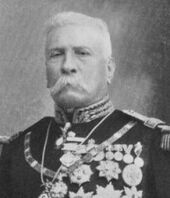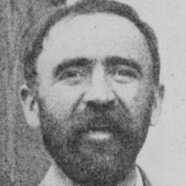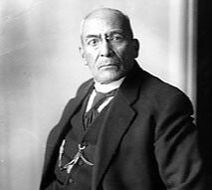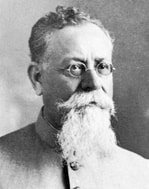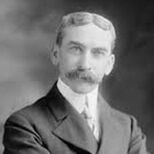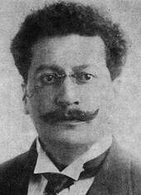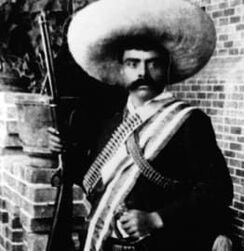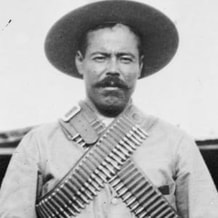mexican revolution
|
|
|
The Mexican Revolution was a complex and bloody conflict which arguably spanned two decades, and in which 900,000 people lost their lives.
The Revolution began with a call to arms on 20th November 1910 to overthrow the current ruler and dictator Porfirio Díaz Mori.
Díaz was an ambitious president, keen to develop Mexico into an industrial and modernized country. While he worked on implementing a capitalist society building factories, dams, and roads the rural workers and peasants suffered greatly.
Ricardo Flores Magón was first imprisoned in 1892 for leading a small demonstration against the reelection of Mexican dictator Porfirio Díaz. He soon joined with a small group of liberal reformers, with whom he founded the magazine Regeneracíon in 1900. Flores Magón was imprisoned twice for his radical activities with the group, and the government suppressed Regeneracíon in 1901. Following his third arrest in 1903 for opposing the Díaz government, Flores Magón and several of the other radicals fled to the United States.
Díaz reigned using a campaign of bullying, intimidating citizens into supporting him. While civil liberties such as the freedom of press suffered under his rule, the greatest injustice came in the form of new land laws. In an attempt to strengthen ties with the United States and other influential foreign interests, Díaz allocated land, once belonging to the people of Mexico, to wealthy non-nationals. In addition to this, no Mexican was able to own land unless they had a formal legal title. Small farmers were rendered utterly helpless, there was no other option but an uprising.
The Revolution began with a call to arms on 20th November 1910 to overthrow the current ruler and dictator Porfirio Díaz Mori.
Díaz was an ambitious president, keen to develop Mexico into an industrial and modernized country. While he worked on implementing a capitalist society building factories, dams, and roads the rural workers and peasants suffered greatly.
Ricardo Flores Magón was first imprisoned in 1892 for leading a small demonstration against the reelection of Mexican dictator Porfirio Díaz. He soon joined with a small group of liberal reformers, with whom he founded the magazine Regeneracíon in 1900. Flores Magón was imprisoned twice for his radical activities with the group, and the government suppressed Regeneracíon in 1901. Following his third arrest in 1903 for opposing the Díaz government, Flores Magón and several of the other radicals fled to the United States.
Díaz reigned using a campaign of bullying, intimidating citizens into supporting him. While civil liberties such as the freedom of press suffered under his rule, the greatest injustice came in the form of new land laws. In an attempt to strengthen ties with the United States and other influential foreign interests, Díaz allocated land, once belonging to the people of Mexico, to wealthy non-nationals. In addition to this, no Mexican was able to own land unless they had a formal legal title. Small farmers were rendered utterly helpless, there was no other option but an uprising.
|
|
|
|
Emiliano Zapata was a poor, barely-literate peasant from the state of Morelos. He was furious with the Diaz regime, and in fact, had already taken up arms long before Madero’s call for revolution. Zapata was an idealist: he had a very clear vision for a new Mexico, one in which the poor had rights to their land and were treated with respect as farmers and workers. He stuck to his idealism throughout the revolution, breaking ties with politicians and warlords as they sold out. He was an implacable enemy and fought against Diaz, Madero, Huerta, Obregon, and Carranza. The path of the Revolution certainly didn’t run smoothly and the country saw a string of unreliable presidents. Francisco Madero, who was responsible for removing Díaz from power, was a weak leader and failed to implement the land reforms he had promised. He was quickly
|
|
replaced by General Victoriano Huerta who had him executed within a week of coming to power. U.S. Ambassador Henry Lane Wilson gave his blessing to what became known as the decena trágica, the Ten Tragic Days, during which Huerta terrorized Mexico City and seized power. Wilson ignored the pleas of Madero’s wife to save her husband’s life, telling her: “Your husband’s downfall was due to the fact that he never wanted to consult with me.” Days later, President Madero and Vice-President Pino Suarez were murdered by Huerta’s men. Huerta himself was a dictator and was overthrown by Venustianio Carranza in 1914. While many accused Carranza of being power hungry he also lusted after peace. In the pursuit of civil rest he formed the Constitutional Army and a new constitution into which he accepted many of the rebel demands.
When the revolution broke out, Pancho Villa was a small-time bandit and highwayman operating in northern Mexico. He soon took control of his band of cutthroats and made revolutionaries out of them. Madero managed to alienate all of his former allies except for Villa, who was crushed when Huerta executed him. In 1914-1915, Villa was the most powerful man in Mexico and could have seized the presidency had he so wished, but he knew he was no politician. After the fall of Huerta, Villa fought against the uneasy alliance of Obregon and Carranza.
Ultimately while the Mexican Revolution was aimed at ensuring a fairer way of life for the farming classes, many argue it achieved little more than the frequent change of leadership in the country. It was only in 1942 when the Mexican ex-presidents stood on the stage of the Mexico City Zocalo to show their support to Britain and America in the Second World War, that the citizens of Mexico saw their first glimmer of political solidarity and a country finally united.
When the revolution broke out, Pancho Villa was a small-time bandit and highwayman operating in northern Mexico. He soon took control of his band of cutthroats and made revolutionaries out of them. Madero managed to alienate all of his former allies except for Villa, who was crushed when Huerta executed him. In 1914-1915, Villa was the most powerful man in Mexico and could have seized the presidency had he so wished, but he knew he was no politician. After the fall of Huerta, Villa fought against the uneasy alliance of Obregon and Carranza.
Ultimately while the Mexican Revolution was aimed at ensuring a fairer way of life for the farming classes, many argue it achieved little more than the frequent change of leadership in the country. It was only in 1942 when the Mexican ex-presidents stood on the stage of the Mexico City Zocalo to show their support to Britain and America in the Second World War, that the citizens of Mexico saw their first glimmer of political solidarity and a country finally united.
Content on this page adapted from History Detectives Special Investigations, Oregon Public Broadcasting and Woodrow Wilson: A Biography, by John Milton Cooper Jr. and Kevin Cordiero, Trinity Academy for the Performing Arts.
Porfirio Díaz
|
Porfirio Díaz, (born Sept. 15, 1830, Oaxaca, Mex.—died July 2, 1915, Paris, France), soldier and president of Mexico (1877–80, 1884–1911), who established a strong centralized state that he held under firm control for more than three decades. |
FRANCISCO MADERO
|
Francisco Madero was born into a wealthy Mexican family and studied in the United States and Paris. Madero organized the Anti-Reelectionist Party when Mexico's dictator Porfirio Diaz declared he would run for reelection in 1910. Madero won the presidential election in 1911, but was unprepared for the demands of office. He was assassinated in 1913.
|
victoriano huerta
|
José Victoriano Huerta Márquez was a Mexican military officer and 35th President of Mexico, who came to power by coup. After a military career under President Porfirio Díaz, Huerta became a high-ranking officer under democratically-elected President Francisco I. Madero during the first phase of the Mexican Revolution. |
Venustiano Carranza
henry lane wilson
Ricardo Flores Magon
|
Cipriano Ricardo Flores Magón was a noted Mexican anarchist and social reform activist. His brothers Enrique and Jesús were also active in politics. Followers of the Flores Magón brothers were known as Magonistas. He has been considered an important participant in the social movement that sparked the Mexican Revolution.
|
emiliano zapata
|
Born on August 8, 1879, Anenecuilco, Mexico, Emiliano Zapata was a Mexican revolutionary and advocate of agrarianism who fought in guerrilla actions during the Mexican Revolution. He formed and commanded the Liberation Army of the South, an important revolutionary brigade, and his followers were known as Zapatistas. Zapata died on April 10, 1919.
|
poncho villa
|
Pancho Villa started off as a bandit who was later inspired by reformer Francisco Madero, helping him to win the Mexican Revolution. After a coup by Victoriano Huerta, Villa formed his own army to oppose the dictator, with more battles to follow as Mexican leadership remained in a state of flux. He was assassinated on July 20, 1923, in Parral, Mexico.
|
